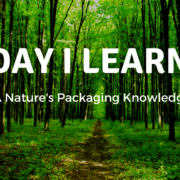The 7 Essential Criteria of Sustainable Forest Management-Part 1
The Montreal Process Criteria and Indicators were created in 1992 during the Earth Summit. They addressed the sustainable management of forests to conserve the overall range of critical functions and characteristics like carbon cycles, forest health, water and soil protection, biodiversity, and forest productivity.
In February 1995, the member countries, including the United States, Australia, Argentina, Canada, China, Japan, and others, adopted these set of criteria for use by the working groups assigned to gauge their practicality and value.
The criteria dubbed-“The Montreal Process Criteria and Indicators for Sustainable Forest Management”, were developed to focus on the challenge of assessing tangible progress towards forest conditions and sustainability.
The indicators are measurable components relating to a part of (or) the entire natural system, which can give insights into the condition of the forest ecosystem.
In today’s Nature’s Packaging post, we describe these essential criteria and explain their importance in sustainable forest management.
Criterion 1: Conservation of Biological Diversity
Biological diversity refers to the variety of life supported by Earth. It comprises distinct levels, including ecosystems, genes, species, and various creatures. The interactions of these levels make the earth habitable. However, in the wake of the climate change threats, the entire concept of biodiversity is under threat, which is why the first criterion focuses on the conservation of biological diversity.
Both harvest prepared and natural forests play a significant part in biodiversity. They are part of ecosystems where different life forms interact with the environment and allow the system to respond to changes, recover from disturbances, and ensure the sustainability of ecological processes.
Human activities tend to adversely affect biodiversity by altering habitats, extinction of species, reducing indigenous populations, and introducing invasive species. Conserving biological diversity allows the forest ecosystems to function properly and provide broader environmental and economic value (forest products).
In this criterion, there are a total of nine indicators. The first three are concerned with the diversity of the ecosystem, describing the type, amount, and organization of forests which provide insights into the ability of forests to support organisms and ecological processes. The other six indicators are concerned with the number and biological diversity of plants and animals supported in these habitats, focusing on the species and genes.
Criterion 2: Maintenance of Productive Capacity of Forest Ecosystems
Populations worldwide rely on forests directly for a multitude of forest-based products. The sustainability of these products is directly linked to the forests’ productive capacity, and if the requirements exceed the limit of that capacity, the ecosystem is depleted or damaged.
Thus, populations must ensure the sustainability of forests by determining acceptable levels of extraction of all the forest-based products that will not collapse the ecosystem. This must also account for the type of forest-based products in demand and how that demand changes due to social, technological, and economic trends advancements. Variations in a forests’ productive capacity can be a signal to modify those trends or other factors affecting the ecosystems.
The second criterion thus focuses on maintaining the productive capacities of forests. It has five indicators, where the first four indicators track conventional measures relating to the trends and status of the forests that support wood supplies. The last indicator focuses on the trends of non-wood products extracted from these forests.
Criterion 3: Maintenance of Ecosystem Health and Vitality
The expansion of a forests health and vitality is dependent on the functioning of the ecosystem’s processes and components. Any natural ecosystem, to maintain its functions and active processes, must have the ability to recover from external disturbances. While most disturbances and stress are natural, some extreme occurrences overwhelm the ecosystem, undermining its ability to function effectively.
As a result, there can be severe ecological and economic consequences, including environmental degradation and elimination of forests benefits to the society. Forest ecosystem health and vitality maintenance efforts can help minimize and mitigate these risks.
The criterion for maintenance of ecosystem health and vitality has three indicators. The indicators focus on the area and percentage of forests affected by circumstances beyond historic variations, lands affected by specific levels of air pollutants, and lands with significantly reduced biological components due to changes in critical ecological processes.
Criterion 4: Conservation and Maintenance of Soil and Water Resources
Soil and water are the core components of a functioning and productive forest ecosystem. These forest components are essential in the regulation of groundwater. Further, the health of underground water systems is directly impacted by topography, soil, and water interactions. The interdependence of soil and water and forest ecosystems makes their conservation an essential aspect of forest management.
The interactions involved can significantly affect habitats and poor management can result in the loss of riparian buffering capability, degradation of aquatic habitats, and soil compaction. Water flow changes can result in flooding risks which threaten the lives of humans and other organisms.
It is the fourth criterion and has five indicators. The first four indicators focus on soil and water resources protection and management practices. In contrast, the last indicator is the size of water bodies with the noteworthy changes in physical, chemical, and biological properties.
Join Nature’s Packaging next week as we finish up with the remaining criteria in our next blog post, “The 7 Essential Criteria for Sustainable Forest Management – Part 2”










